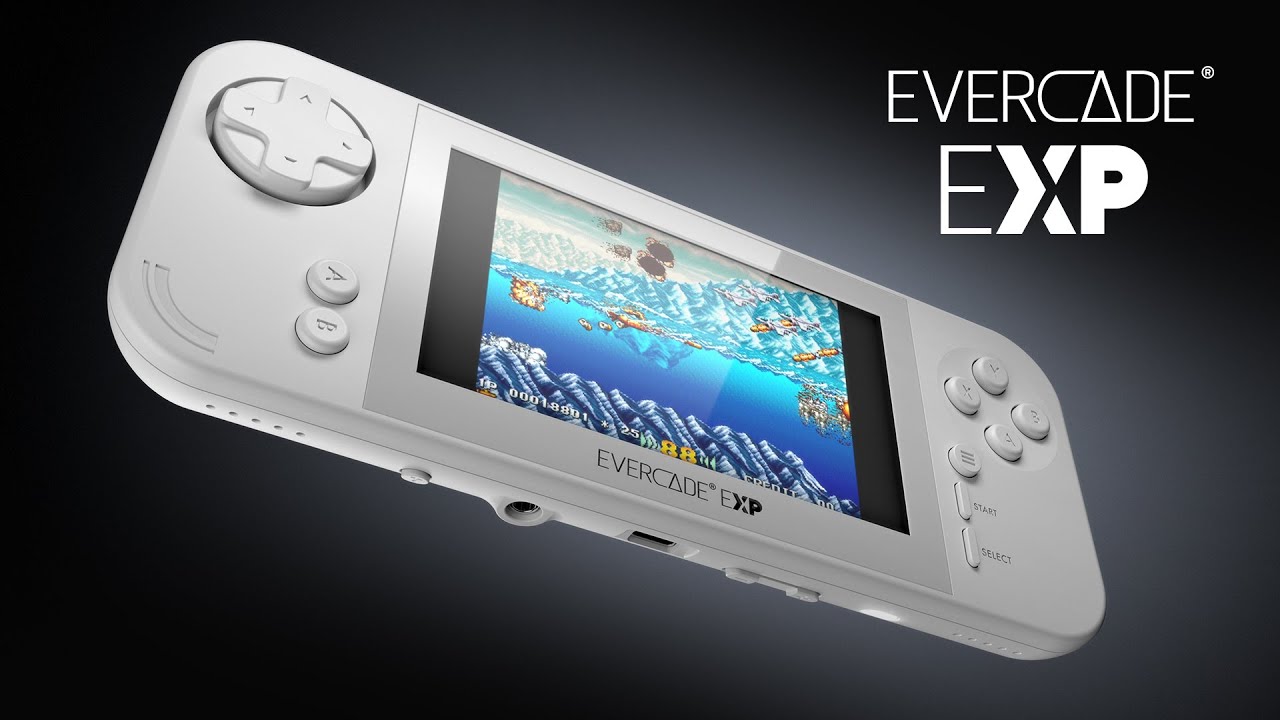
Evercade EXP
Evercade has been around for a few years now with the original handheld releasing back in 2020, and offers retro gamers a way into collecting fully licensed classic titles on collections of cartridges. I’ve been looking at an Evercade for some time myself but have been struggling with picking up an EXP handheld or a VS console. Scoring a good discounted deal on the EXP recently (usually costs around £120 new) meant my decision was made for me in a way, but I still have an eye on the console. Was this retro fuelled handheld from Blaze worth the wait? Lets take a quick look.
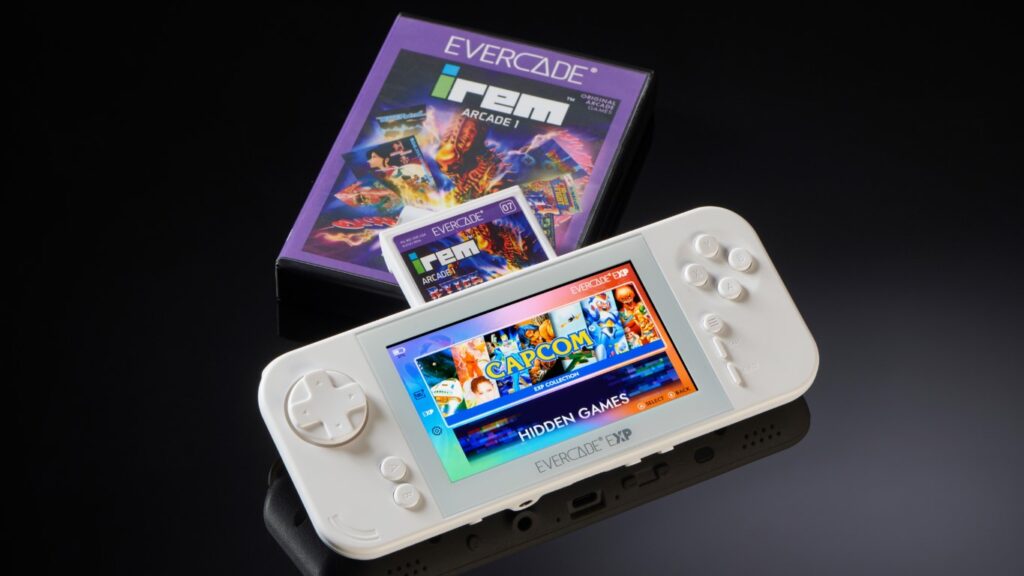
UPDATE (20/07/2023): Unfortunately the unit used for this review developed an issue not long after with its internal display that Evercade support are either not interested in or stumped on themselves when contacted. Most times now the system will boot but the display only lights up and stays blank. If you plug in a HDMI and disconnect it then the display will work as it should and the UI etc is displayed. As someone who used the HDMI out often, I can only assume its a bug or something caused by that given it can be used to fix the issue as a workaround, this problem never reared its head either when used exclusively as a handheld in the first few weeks and only cropped up once I started to connect to my TV more often. This review still stands for the most part if you’re looking at the EXP as a pure handheld, but would now advise caution if wanting to make use of the HDMI out function for some big screen action.
Compared to the original, the EXP is a notable improvement in many ways. The most noticeable would be the screen. Going from what looked to be a 480×272 TN screen to a 800×480 IPS display is a huge upgrade and kills the main issue with the original Evercade. Other changes see power changed from a switch to a button, USB-C for charging, and a slight rework of control layout. There’s now also an additional two shoulder buttons bringing it up to 4 and opening up possible 32-Bit games at a later time. The cartridge slot on the back is quite large and open, so leaving a cartridge inserted is best and they sit flush within the system and feels as if it completes the rear.
Folk may find the lack of something like Bluetooth odd, but the included speakers are fine and there is a 3.5 port as well for headphone use. Wifi is also included but pretty much just used for easier system updates (previous model was done over USB) Overall the build quality is decent, the rough rear aids grip and the system is comfortable to hold, just be mindful of the rear vents. The EXP can get warm at the back left of the device after only around 20-30 minutes of play, it doesn’t get hot to the touch or anything like that, but those vents mentioned no doubt help given it is passively cooled. Battery life is good too, rated at about 5 hours by Blaze, but I’ve easily overshot that by an hour or two between charges at times.
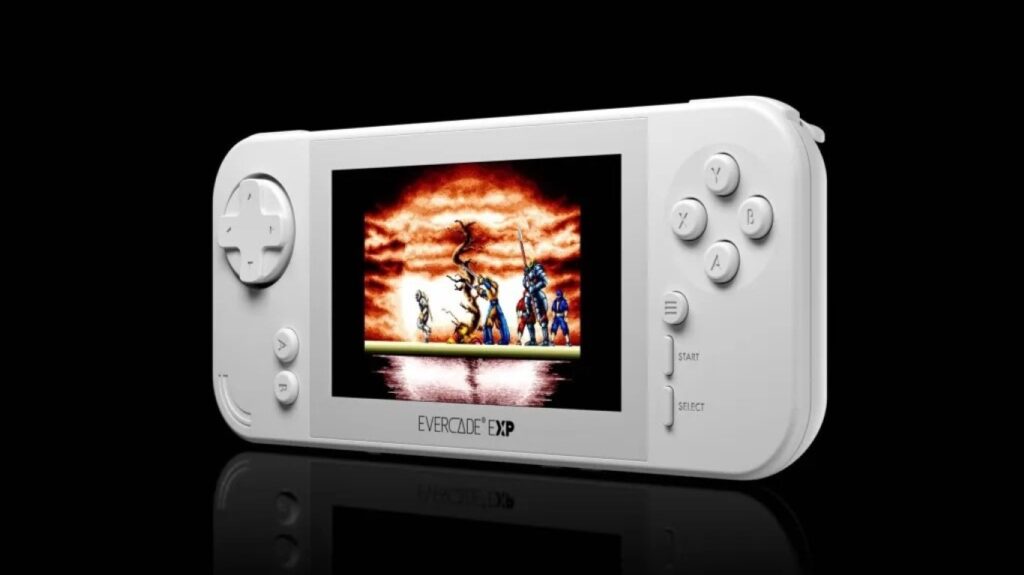
One of the headline features for the EXP is the Tate mode. You’ll notice an A & B button underneath the Dpad and an extra little button on the underside of the console. Press that button and the screen will switch orientation, and lines up perfect for those extra buttons, so games can make the most of that extra vertical real estate. This works best for vertical shmups of course, but other games like Centipede on Atari’s Arcade collection make full use of it too. The one snag to it is that it can take some time to find that comfort zone. There isn’t much space to grip the console so it can take a while for it to feel right, took me a couple of days, but you will get there eventually and its worth the effort.
One feature no doubt going to be overlooked is the HDMI out. It’s actually pretty seamless to use, plug in the cable and the output automatically switches to the TV, vice versa when removed. The output is only 720p though, but you’re not really going to need much more considering the retro games being played, and the handheld itself acts as the controller like a Game Gear. Unlike the Game Gear you can’t connect another controller, I tried several of my USB ones via the USB-C port, so it looks as if multiplayer is still the exclusive realm of the Evercade VS console.
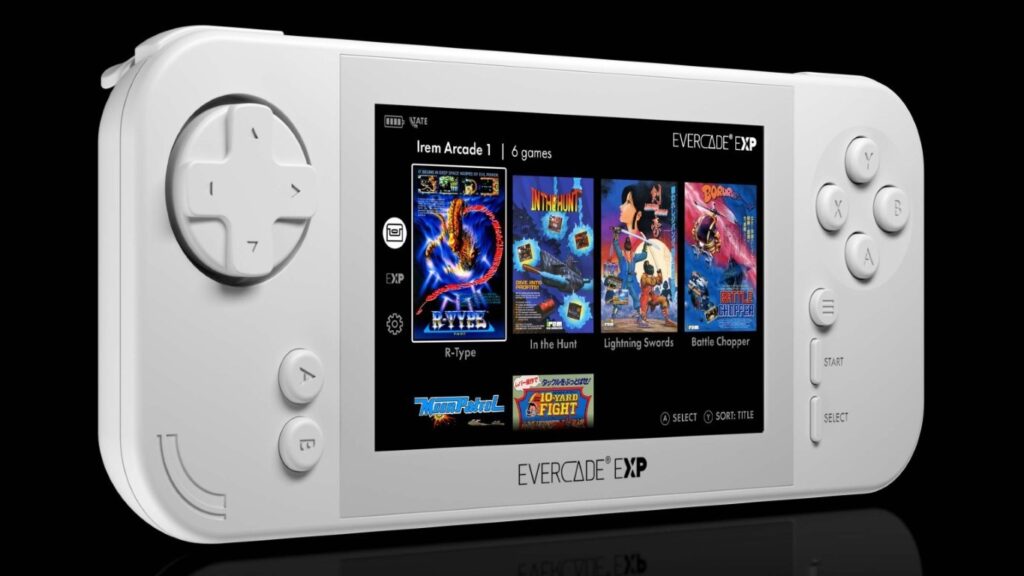
One highlight of the Evercade ecosystem itself is the games as they come on nostalgic chunky cartridges, there’s no digital downloads here (outside of the free monthly game for EXP & VS users) and most carts currently work on all Evercade systems. A big selling point of the EXP though is the integrated Capcom collection, not available on a cartridge, which gives you 18 classics including the likes of Street Fighter II Hyper, Mega Man, Ghouls n Ghosts, Breath of Fire and Strider. Also included in the box is a cart of the Irem collection, there’s only 6 games on this but that does include the original arcade version of R-Type and the first official western release on console for Lightning Swords.
So how does the emulation fare? Considering all these games are licensed and curated for the collections, there’s no issues to speak of – this ain’t like those dodgy handhelds online packed with pirated roms the device can barely play properly. Each game sports its own controls to match the system, recent firmware even added the option to remap some controls as well, and there’s a little info on the UI with flashy game covers to browse. When playing the games you get some display options to tweak as well like scaling, aspect ratio & scanlines, which can be system-wide or per game and these even carry over to the HDMI output. Games as a whole play really well on the EXP due to the nice Dpad and responsive buttons, but there are some occasions where it doesn’t hold up as well (outside of getting used to Tate mode) This mainly comes down to something like doing the more advanced moves on Street Fighter II Hyper for example, as the Dpad is similar yet smaller to one on the Mega Drive or Saturn, so can be tougher due to more limited travel in comparison to those controllers.
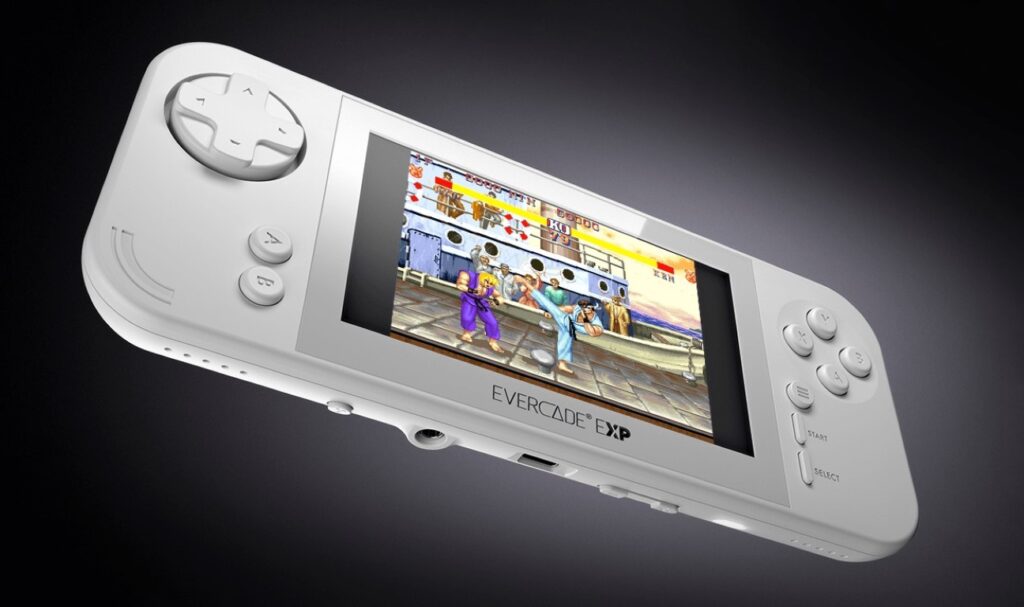
With more games to release on the horizon, Duke Nukem collections recently announced, I’m hooked on this Evercade. With a few extra carts already arrived and more on the way (around £17-£25 on Amazon with Prime delivery) it’s relatively cheap to build up a huge library of classic games and the few niggles the EXP has can be overlooked once a game is loaded up. Owners of the original that are happy enough with it may not see much of a reason upgrade still (may change in future with firmware updates adding features), but for retro gamers without this offers a great way of playing some obscure games you’ve maybe never played, as well as giving you that old-school nostalgia with its cartridges and TATE modes.
Geoffrey Wright
Latest posts by Geoffrey Wright (see all)
- The Invincible (PC) - April 19, 2024
- Axiom of Maria: Prologue (PC) - April 17, 2024
- Dragons Dogma 2 (PlayStation 5) - April 12, 2024




